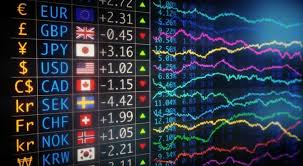
Forex trading has gained immense popularity in recent years, thanks to its accessibility and the potential for high returns. To succeed in this highly competitive environment, traders often rely on various indicators to make informed decisions. In this article, we will explore the best indicators for Forex trading that can enhance your strategies and improve overall performance. Whether you’re a novice or an experienced trader, understanding these indicators can significantly impact your trading results. For further reading and resources, visit best indicators for forex trading Trading Platform VN.
Understanding Forex Indicators
Forex indicators are mathematical calculations based on the price, volume, or open interest of a currency pair. They help traders identify trends, potential reversals, and entry/exit points in the market. Indicators can be classified into two main categories: leading indicators and lagging indicators. Leading indicators aim to predict future price movements, while lagging indicators provide signals based on historical price data.
1. Moving Averages
Moving Averages (MAs) are one of the most widely used indicators in Forex trading. They smooth out price data to identify the direction of the trend. There are two main types of moving averages: Simple Moving Average (SMA) and Exponential Moving Average (EMA). The EMA gives more weight to recent prices, making it more responsive to new information.
Traders often use moving averages in combination—such as the crossover strategy—where a short-term MA crosses above a long-term MA, signaling a potential buying opportunity and vice versa for selling.
2. Relative Strength Index (RSI)
The Relative Strength Index (RSI) is a momentum oscillator that measures the speed and change of price movements. RSI ranges from 0 to 100 and is typically considered overbought when above 70 and oversold when below 30. Traders look for divergences between price and RSI to spot potential reversals.
For instance, if the price reaches a new high, but RSI does not follow suit, this may indicate weakening momentum and a potential reversal to the downside.
3. Moving Average Convergence Divergence (MACD)
The MACD is a trend-following momentum indicator that shows the relationship between two moving averages of a security’s price. The MACD consists of three components: the MACD line, the signal line, and the histogram.
When the MACD line crosses above the signal line, it can be interpreted as a bullish signal, while a crossover below can indicate a bearish trend. The histogram provides additional information about the strength of the trend, showing potential reversal points.
4. Bollinger Bands
Bollinger Bands are volatility indicators that consist of a middle band (SMA) and two outer bands set at a specified number of standard deviations from the SMA. As the price becomes more volatile, the bands widen, while they contract during less volatile periods.
Traders often look for price action around the bands. A price breakout above the upper band may indicate an overbought condition, while a breakout below the lower band may indicate oversold conditions.
5. Fibonacci Retracement Levels

Fibonacci retracement levels are horizontal lines that indicate potential support and resistance levels based on the Fibonacci sequence. Traders use these levels to determine potential reversal points in the market after a significant price movement.
Common Fibonacci levels are 23.6%, 38.2%, 50%, 61.8%, and 78.6%. Many traders combine Fibonacci levels with other indicators to confirm their trading decisions.
6. Stochastic Oscillator
The Stochastic Oscillator compares a particular closing price of a currency pair to its price range over a specific period. The results are represented as a number between 0 and 100, much like the RSI.
Values above 80 are considered overbought, while values below 20 are considered oversold. Traders often use Stochastic Oscillator crossovers as buy or sell signals, taking note of divergences to spot potential reversals.
7. Average True Range (ATR)
The Average True Range (ATR) is a volatility indicator that measures market volatility by decomposing the entire range of an asset price for that period. It provides insights into how much a currency pair typically moves during a given timeframe.
Traders use ATR to determine position sizing and set stop-loss levels, enabling them to manage risk effectively. A higher ATR indicates a more volatile market, while a lower ATR suggests a more stable market.
8. Parabolic SAR
The Parabolic Stop and Reverse (SAR) indicator is used to determine the direction of an asset’s momentum and to set trailing stop losses. The dots placed either above or below the price chart indicate whether the trend is bullish or bearish.
When the dots are below the price, it suggests a bullish trend, while dots above the price imply a bearish trend. The Parabolic SAR can be used in conjunction with other indicators for confirming entry and exit points.
Combining Indicators for Better Results
While each of these indicators can provide valuable insights, using them in isolation may lead to false signals. Successful traders often employ a combination of different indicators to create a comprehensive trading strategy, enhancing decision-making processes and improving overall trading success.
For instance, a trader might use a moving average crossover alongside the RSI to confirm entry points, reducing the likelihood of entering a trade based on a single indicator’s signal. Finding the right balance and creating a personalized strategy is key to effective Forex trading.
Final Thoughts
Forex trading can be challenging, but employing the best indicators can significantly enhance your trading strategy. Understanding how to use these indicators effectively and combining them to create a robust trading strategy can lead to better outcomes in the Forex market. Remember, no indicator is foolproof, and it’s essential to manage risk and continuously educate yourself about market trends and dynamics. With practice and diligence, you can navigate the Forex market successfully and achieve your trading goals.






